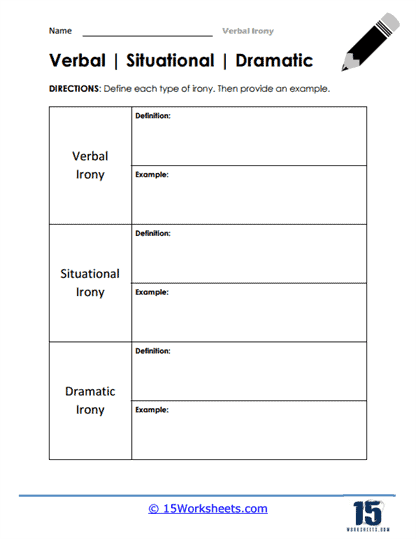Learn The Types

Worksheet Description
This worksheet is designed to teach students about the different types of irony: verbal, situational, and dramatic. The first section, verbal irony, involves a contrast between what is said and what is meant. For example, if it’s raining heavily and someone remarks, “What lovely weather we’re having,” that’s verbal irony.
The second section deals with situational irony, where there is a discrepancy between expected outcomes and what actually happens. For instance, a fire station burning down is situational irony because one would expect a fire station to be the least likely place to burn.
The final section covers dramatic irony, which occurs when the audience knows more about the situations, the causes of conflicts, and their resolutions before the leading characters or actors. That means, in dramatic irony, the words and actions of the characters take on a different meaning for the audience than they do for the characters themselves. A classic example of dramatic irony is in Shakespeare’s “Romeo and Juliet,” where Romeo believes Juliet is dead and kills himself, not knowing that she is actually alive.
Students are expected to provide their own definitions and examples for each type of irony, demonstrating their understanding of these important literary concepts. This exercise enhances their ability to recognize irony in literature and in everyday situations, enriching their reading and writing skills.
